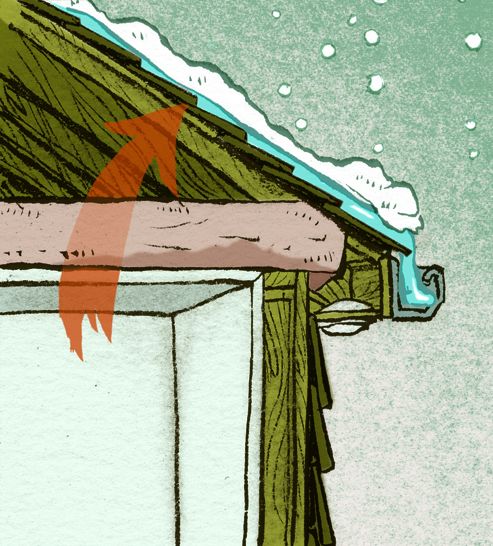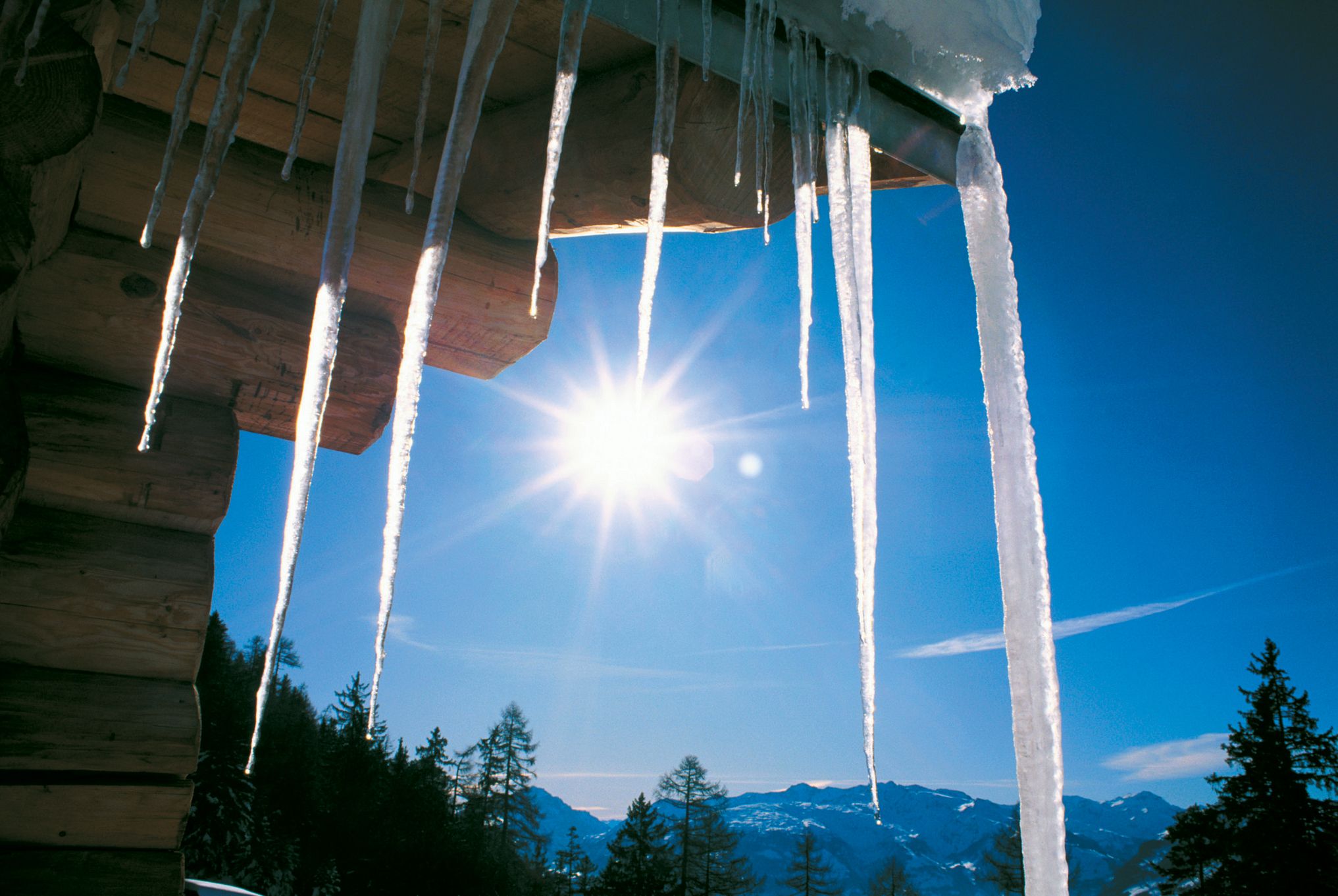Icicles hanging along the eaves of your house may look beautiful, but they spell trouble. That’s because the same conditions that allow icicles to form—snow-covered roofs and freezing weather—also lead to ice dams: thick ridges of solid ice that build up along the eaves.

It’s important to remove ice dams as they can tear off gutters, loosen shingles, and cause water to back up and pour into your house. When that happens, the results aren’t pretty: peeling paint, warped floors, stained and sagging ceilings. Not to mention soggy insulation in the attic, which loses R-value and becomes a magnet for mold and mildew.
Birth of an Ice Dam
- Heat collects in the attic and warms the roof, except at the eaves.
- Snow melts on the warm roof and then freezes on the cold eaves.
- Ice accumulates along the eaves, forming a dam. Meltwater from the warm roof backs up behind it, flows under the shingles, and into the house.
Fast Fixes
While a permanent fix for ice dams usually requires increasing the insulation, sealing, and ventilation in the attic, there are simple ways to diminish the damage after the dam has formed.
Hacking away at ice dams with a hammer, chisel, or shovel is bad for your roofing—and dangerous for you. And throwing salt on them will do more to harm to your plantings than to the ice. This is why it’s important to prevent ice dams from forming in the first place. Short of praying for warm weather, here are two stop-gap measures we recommend:
Blow in cold air
Take a box fan into the attic and aim it at the underside of the roof where water is actively leaking in. This targeted dose of cold air will freeze the water in its tracks. “You’ll stop the leak in a matter of minutes,” says TOH general contractor Tom Silva.
Rake it
Pull off snow with a long-handled aluminum roof rake (above) while you stand safely on the ground. A rake with wheels won’t harm the roofing.
Use Calcium Chloride
Fill the leg of discarded pair of pantyhose with a calcium chloride ice melter. Lay the hose onto the roof so it crosses the ice dam and overhangs the gutter. If necessary, use a long-handled garden rake or hoe to push it into position.
The calcium chloride will eventually melt through the snow and ice and create a channel for water to flow down into the gutters or off the roof.

